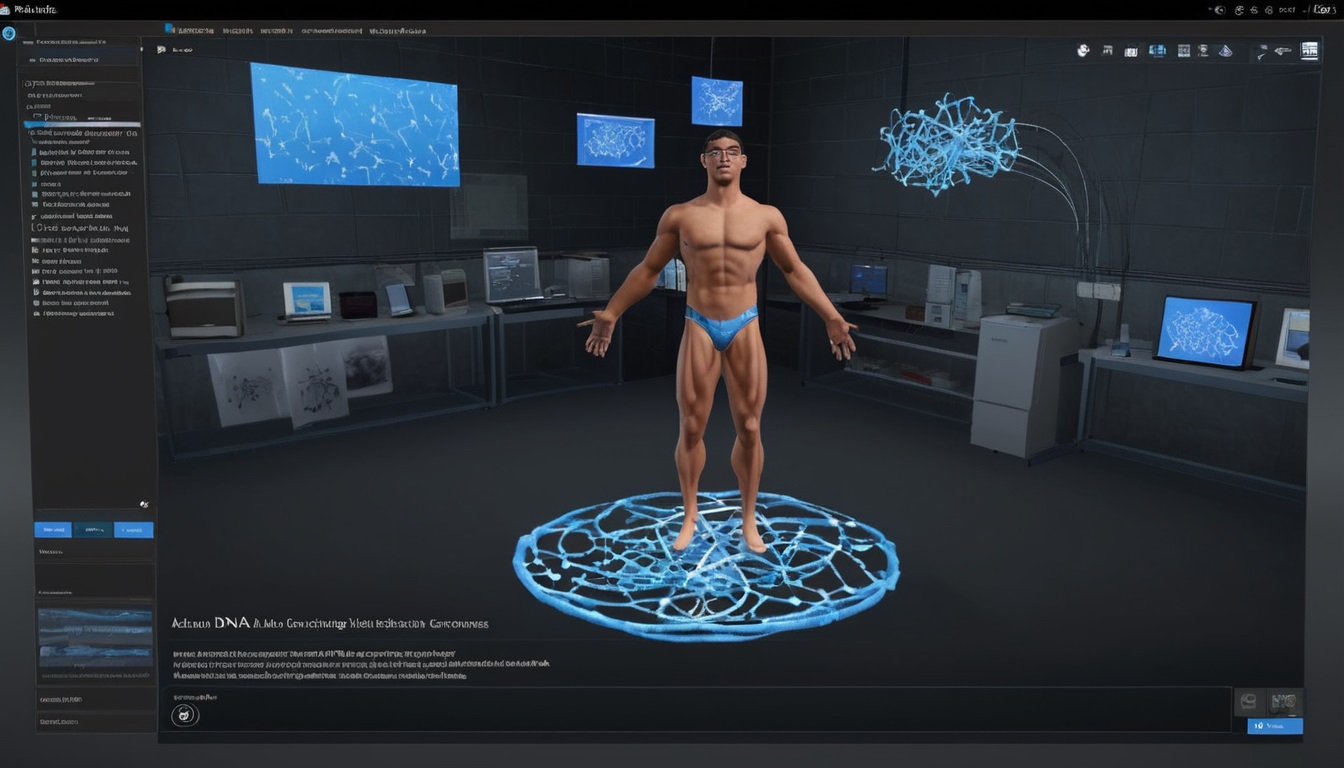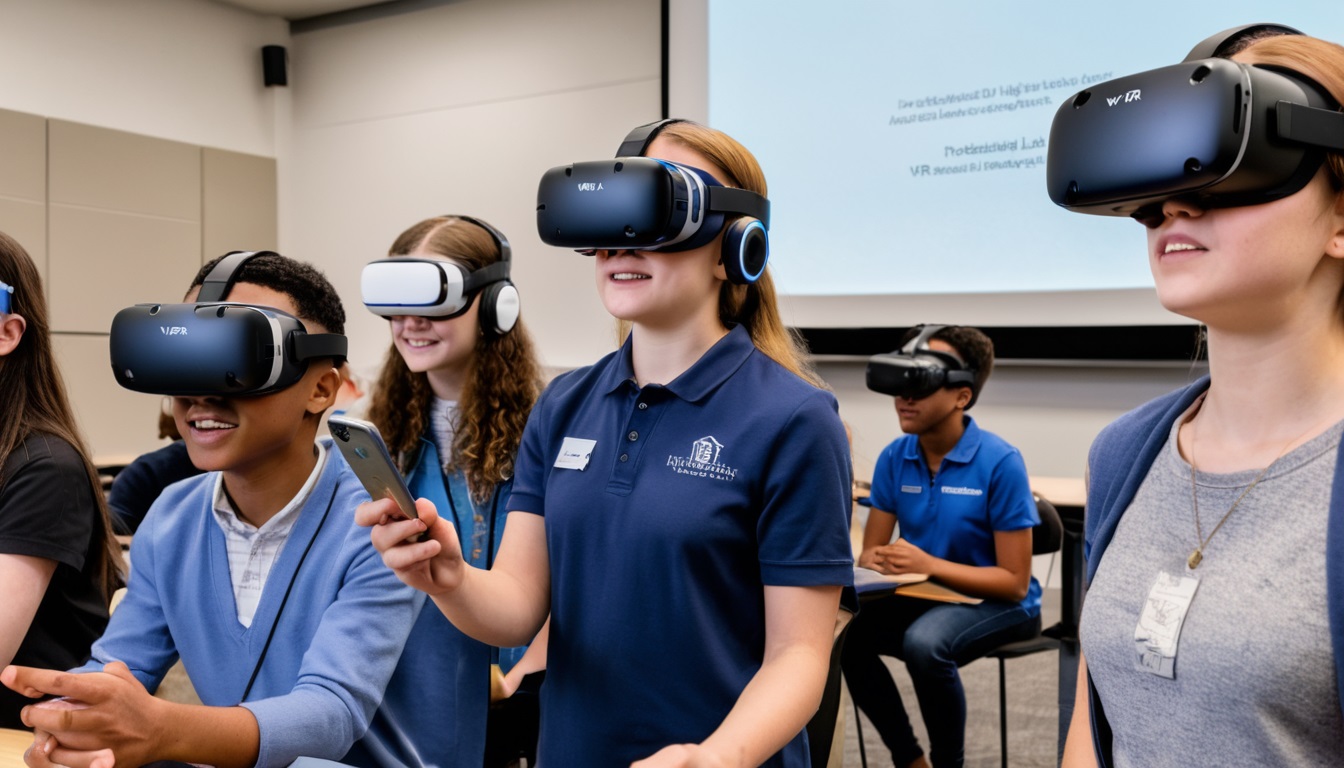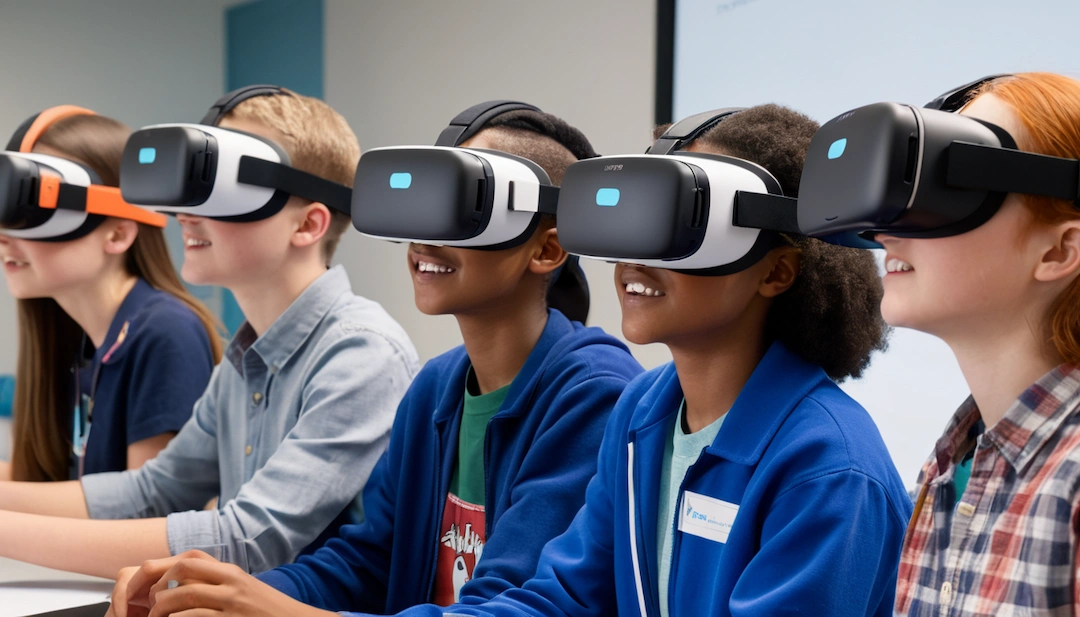Contents [show]
Transforming Learning Through Immersive Technology
Prof. Aécio D’Silva, Ph.D
AquaUniversity
A group of students using VR headsets and AR devices, engaged in a collaborative project, with vibrant 3D models of scientific concepts around them.
VR and AR Labs – In the rapidly evolving landscape of education, Virtual Reality (VR) and Augmented Reality (AR) are emerging as powerful tools to foster creativity in STEM education. These technologies provide immersive and interactive learning experiences that go beyond traditional teaching methods. This collaborative intelligence post explores how VR and AR labs contribute to fostering creativity in STEM education, their importance, objectives, and practical strategies for implementation.
STEM learning thrives on hands-on applications, yet some experiments are difficult to conduct in real-life settings. By leveraging VR and AR technologies to deliver 3D experiences, students can better grasp complex concepts that are abstract and hard to visualize. These technologies provide a more immersive experience, enabling students to interact with simulations in a more intuitive manner.
Integrating VR and AR into STEM education bridges the gap between theoretical knowledge and practical application. These immersive technologies offer students hands-on, experiential learning opportunities that stimulate creativity and innovation.
VR and AR Labs – Importance of VR and AR Labs in STEM Education
VR and AR labs play a crucial role in modern STEM education by:
– Enhancing Engagement: Captivating students’ attention with immersive and interactive experiences.
– Facilitating Experiential Learning: Allowing students to experience situations that are difficult or impossible to recreate in a traditional classroom.
– Visualizing Abstract Concepts: Making complex and abstract concepts easier to understand through 3D visualization.
– Promoting Accessibility: Catering to diverse learning styles and making education more inclusive.
– Fostering Global Awareness: Enabling virtual field trips and global collaborations.
Objectives of VR and AR Labs in Fostering Creativity
The primary objectives of VR and AR labs in fostering creativity include:
- To provide immersive and interactive learning experiences.
- To enhance understanding and retention of complex concepts.
- To develop practical skills in various scientific disciplines.
- To encourage collaboration and teamwork among students.
- To inspire curiosity and a love for learning.
How VR and AR Labs Foster Creativity
- Interactive Simulations and Experiments
Augmented Reality (AR) and Virtual Reality (VR) are immersive technologies that integrate digital content with the real world (AR) or create completely virtual environments (VR). These technologies are crucial for kids as they provide interactive and experiential learning opportunities. AR/VR can transport them to historical events, distant planets, or even inside the human body, deepening their understanding of complex subjects.
They also encourage creativity by allowing kids to design and explore their own virtual worlds. Additionally, AR/VR labs foster empathy and perspective-taking, enabling kids to experience different cultures and scenarios firsthand. In a tech-driven era, proficiency with AR/VR lab setups prepares kids to navigate a digitally enriched future and equips them with the skills needed to adapt and innovate across various fields.
VR and AR labs allow students to conduct virtual experiments and simulations that would be impossible or unsafe in a traditional classroom. For example, students can explore the human body in 3D, conduct chemistry experiments without the risk of hazardous reactions, or simulate space missions. These interactive experiences stimulate creative thinking by allowing students to explore and experiment in a risk-free environment.
- Visualization of Complex Concepts
AR and VR technologies enable students to visualize complex scientific concepts in three dimensions. For instance, AR can overlay digital information onto real-world objects, helping students understand molecular structures, anatomical features, or astronomical phenomena. This enhanced visualization fosters creativity by making abstract concepts more tangible and accessible.
- Collaborative Projects and Problem-Solving
VR and AR labs encourage collaboration and teamwork by allowing students to work together on projects in shared virtual spaces. For example, students can collaborate on designing a sustainable city, solving environmental challenges, or developing innovative engineering solutions. These collaborative projects promote creative problem-solving and critical thinking skills.
- Immersive Storytelling and Scenario-Based Learning
VR and AR technologies can create immersive storytelling experiences that integrate elements from various STEM disciplines. For example, students can embark on a virtual journey through ancient civilizations, exploring historical, geographical, and scientific aspects. Scenario-based learning in VR and AR environments encourages students to think creatively and apply their knowledge in real-world contexts.
- Hands-On Design and Prototyping
VR and AR labs provide tools for students to design and prototype their own creations. For example, students can use VR to create 3D models of engineering projects, architectural designs, or scientific experiments. These hands-on design activities foster creativity by allowing students to bring their ideas to life in a virtual space.
- Encouraging Exploration and Curiosity
VR and AR technologies encourage exploration and curiosity by providing students with access to virtual field trips and global experiences. For instance, students can virtually visit the Great Barrier Reef, explore the surface of Mars, or tour a cutting-edge research facility. These immersive experiences inspire students to ask questions, seek answers, and think creatively about the world around them.
- Personalized Learning Experiences
VR and AR labs support personalized learning by allowing students to progress at their own pace and explore topics of interest in depth. For example, students can choose their own virtual experiments, explore different career paths in STEM, or delve into advanced scientific concepts. Personalized learning experiences foster creativity by encouraging students to pursue their passions and interests.
By following these strategies, educators can effectively integrate VR and AR labs into STEM education, fostering creativity and preparing students for the challenges and opportunities of the future.
In summary, VR and AR labs offer transformative potential for fostering creativity in STEM education. By providing immersive, interactive, and hands-on learning experiences, these technologies enhance student engagement, understanding, and practical skills. Integrating VR and AR into STEM education not only prepares students for future technological advancements but also inspires a lifelong love for learning and creativity.
References:
- Enhancing STEM Learning Through VR & AR Technology (https://hundred.org/en/innovations/enhancing-stem-learning-through-vr-ar-technology)
- Virtual Reality and Augmented Reality Labs – HundrED.org (https://hundred.org/en/innovations/virtual-reality-and-augmented-reality-labs)
- Importance of VR Lab in Education – STEMROBO (https://www.stemrobo.com/importance-of-vr-lab-in-education/)
- AR and VR Lab for Schools – YouTube (https://www.youtube.com/watch?v=M7xl98tjFVw)






